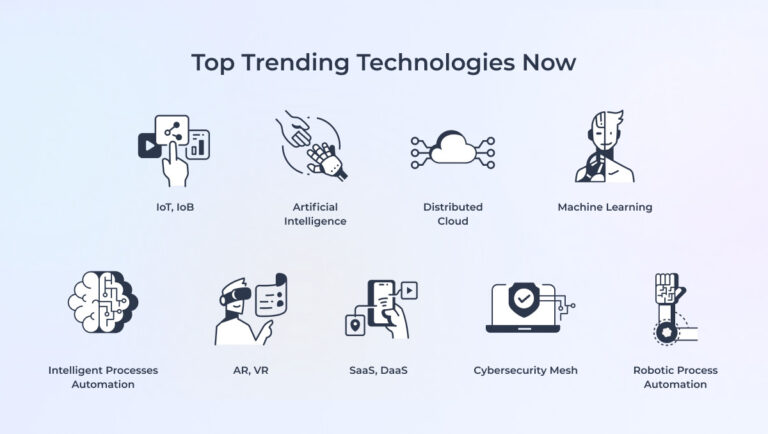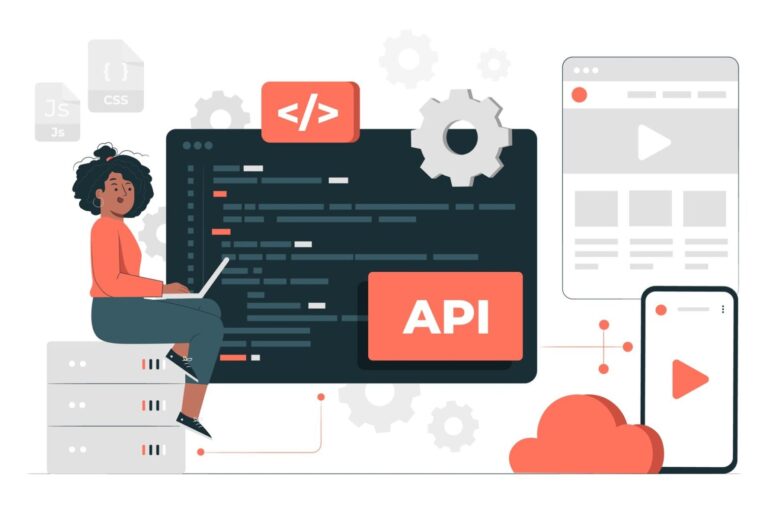Software development is a serious commitment that requires thorough preparation. There is no better way to achieve project success than asking dozens of questions about development flow and its peculiarities.
All you need to do is define the most critical questions and contact the software developers to ask them directly. So, we’ve prepared a list of the most important ones to ask that can help you prepare for your app development and consider all possible risks.
Why product discovery is the first step to a project's success
It’s no secret that every new project should start with research, and software development is no exception. You will invest your time and money into building a solution, so before making any decision, you need to ask many project-related questions to understand the purpose of the end solution, its possible strengths and weaknesses, its unique selling point, and much more. And that is exactly what the Discovery stage is for.

Good to know
Although the pre-development research may seem too tiresome and time-consuming, you shouldn’t overlook the discovery phase. Many software development companies like Altamira offer consulting services that include holistic business and market research. As a result of these consultation sessions, you get the following:
- Project vision document;
- Well-formulated description of your project;
- Specifications and functional requirements;
- Properly selected tech stack;
- Estimation document;
- Wireframes of your solution.
The Discovery stage helps organize the process, shedding light on any unknowns, setting the groundwork, and serving as the cornerstone for the development process that lies ahead.
On top of that, it also gives you an immersive experience into bridging the gap between your final product and the realities of how to make it happen from a technical standpoint. You get a unique opportunity to learn about software development by slowly pivoting from the business development angle.
But before you contact the software development company and proceed with the Discovery stage, you need to ask yourself a couple of technical and project management questions that will help you and your team understand how to bring your idea to life. Let’s now take a closer look at those questions.
Are there any similar solutions on the market?
Once you’ve identified what challenges your solution will solve, you need to look for similar solutions on the market. Why is that so important?
- First, you will be able to check their feature set, the technology used, the audience those solutions attract, and their pros and cons.
- Second, you will better understand whether you really need to develop a custom software solution or if a ready-made solution may be a perfect fit for your business.

So, by checking similar solutions, you kill two birds with one stone—you discover the best practices and approaches of your competitors, namely, you evaluate and scope out the market to determine what makes better sense for you—to buy an existing solution that was designed previously or to build a custom-tailored one.
Alternatively, by comparing ready-made solutions, you may also end up collecting ideas for an ideal combination of features that you value. And consequently this will help you envision and formulate what features you want your unique custom solution to be comprised of.
You may already use some ready-made solutions for ensuring better productivity level in your company. In this case you know that they have some major cons like low level of customization, some issues related to third-party services connection and usage, etc. So if you ask us what’s better – we’d say custom solutions that are fully adaptable to your business requirements and processes.
Our Business Transformation Expert
What value can a solution add to a business?
Not only is a custom solution a useful tool able to boost your business’s productivity, but it can also add value to your company in many other different ways. Implementation of new technologies help you address the following needs:
- Reducing your operating costs;
- Influencing your revenue and increasing it;
- Changing processes and employee management;
- Improving customer service, engagement and satisfaction;
- Increasing business efficiency.
The better your business revenue and efficiency are, the higher your business value. On top of that, by investing in custom solutions, you also invest in your company’s scalability. As your business grows, the solutions can be modernized and improved and last you for years.
Related topic
There are several ways to define the value of custom software development for your business. You can use a scorecard valuation or comparable transactions method. To find out how they work and what indexes to count, proceed to our blog post.
So, before taking any action, think about some key things, like your expectations about the development, the issues you will solve with it, the value of your future software, and your unique selling point. Once you’ve got some ideas, don’t hesitate to contact the project team, complete the Discovery stage, and initiate the development.
What data will you need to store and work with?
Whatever solution you are building, you will need to store its data somewhere. Therefore, you will need a reliable and suitable database. Its selection depends directly on the kind of data you are going to store. There are many types of data required for different purposes. It can be:
- structured or unstructured;
- qualitative or quantitative;
- real-time or time-stamped;
- Big Data or Data Warehouse.
For example, Big Data and real-time data are already used in many business industries (like healthcare, agriculture, transportation, banking, etc.) for predictive analysis, better customer service, analysis of different patterns, behaviors, etc.
Of course, you may be a non-technical person and face difficulties defining the right data type or database. The developers will help you with that in no time. All that is required of you is to specify the exact project deliverables of your future solution and learn about the project’s progress.
We would also recommend that you select developers who work with the most popular and commonly used databases, such as MySQL, Firebase, PostgreSQL, and Redis. For example, here at Altamira, we have specialists with extensive experience who work with all those databases and know how to select the most suitable one for a particular industry.
Also, the amount of data tends to grow with time. So, it is preferable to start adding all data to a reliable server, which will guarantee the stable performance of your solution. Even if something happens to your data, you will not lose it completely because of backup, and the server can recover the information.
What about software scalability?
As your business grows, you need more powerful and advanced solutions. So when you develop custom software for your company, make sure that it is scalable enough and can be modernized and improved in the future without requiring major investments.
The software should have great architecture and infrastructure, be able to work with loads of data, accumulate and perform tasks consistently, have reliable logging services and be very secure. Don’t be afraid to ask your team how they ensure all these aspects.
For example, at Altamira, we work with businesses of different sizes and for 9+ years, we’ve gained vast experience in building scalable projects. We use tools such as LoadBalancers, Amazon S3 for keeping troves of data in order, and of course MySQL database that is probably the most reliable one.
We know that scalability means a lot because, with time, you may have more users who need to access and use your solution. So if you don’t pay enough attention to the software architecture, there can be issues in the future.
For example, you may experience a drop-off in the solution’s performance because there will be an influx of new, excessive data that needs to be processed at the expense of speed and performance. And you definitely do not want that to happen.
What latest technologies should be used for your next project?
Our world gets smarter each year, and some of the latest technologies replace other old but good ones. So, whether you are building a solution from scratch or modernizing your existing one, you need to use the latest technologies. Not only can this improve your current company processes, but also revolutionize your operations altogether. Every year Garnter publishes an article covering the most relevant and popular technologies that will shape businesses during upcoming years. And those trends cannot be ignored.

Let’s take IoT – it helps create smarter and more efficient workspace environments. Its implementation lets you achieve efficiency by saving on operating costs, better coordinating the departmental work, and making the workspace more convenient and safe. Smart locks, printers, systems for meeting rooms – are already here and are no longer something you read in fictional writing.
Hot topic
Wondering how the latest technologies can make your office a better place to work? Hurry up and read our post, which includes the most interesting and recent examples of IoT-powered solutions. Maybe your office needs exactly such a remake and you didn’t even know it.
Speaking of the high-end technologies, we should definitely mention such crucial ones as: Artificial Intelligence, Machine Learning, Augmented Reality (AR), Virtual Reality (VR), robotics and of course cloud migration. They can be used in virtually any business to its advantage, giving it an edge, adding to its productivity, effectiveness, competitiveness, and ultimately profitability.
For example, AR and VR are actively used in textile, clothing and goods manufacturing, AI is used for simulation training and predictive analysis in logistics. Machine Learning is utilized for finding safety holes in solutions to train and prop up cybersecurity protection.
A software development company that works with the latest technologies can help you select a perfect fit for your company and make a robust solution that you probably haven’t even thought of.
Are there any third-party integrations required?
Third-party integrations can make any solution more feature-rich and versatile. Moreover, their implementation is relatively fast, they cost less and offer a range of the best features that have a long, proven track record.

For example, many solutions these days require integration of services for navigation, chatting or payment operations. By using necessary APIs you can quickly connect your solution with Google Maps service, Twilio and Stripe. It takes hours of work instead of months that you would have spent if you were developing something from scratch.
These days, many business management tools require integrations. So if you check out the market you will find all kinds of APIs – the ones for healthcare solutions, travel and online shopping apps, Drug data integrations, logistics, education, sports and many more.
The API economy impacts businesses, helps increase time to market, and make solutions more secure. However, it’s very important to use APIs correctly and only as needed and appropriate. That’s why our technicians always assess which third-party solutions may apply to your projects based on what you may require, what pros, cons or limitations those integrations may present, and if there are any better alternatives.
All this information is collected in a document known as the “Tech Vision”. It is created during the Discovery Stage, namely as part of its last phase – validation, when all of the unknowns related to your project have been discovered.
Pro tip
Apart from obvious benefits, third-party integrations have their cons and concerns. So, before you consider adding any to your project, read our post and make the right decision. We would not recommend overloading your solution with APIs since this influences its infrastructure and may lead to additional potentially debilitating costs in the future.
To summarize
Many business owners consider initiating software development projects on their own, but put that idea aside because there are too many unknowns. Business leaders have dozens of ideas and questions buzzing in their minds at any given moment. Often, they don’t know which certain aspects should be asked or addressed first. But after all, the most important thing is to make the right choices and minimize the chance of losing your time and money.
If you are one of those business owners struggling with the selection of the development vendor to build your new projects, then we’d give you one valuable piece of advice – contact that team and don’t the list of important questions to ask. We have described some of the most important ones in this post. So we hope it will help you to make the right decision.






